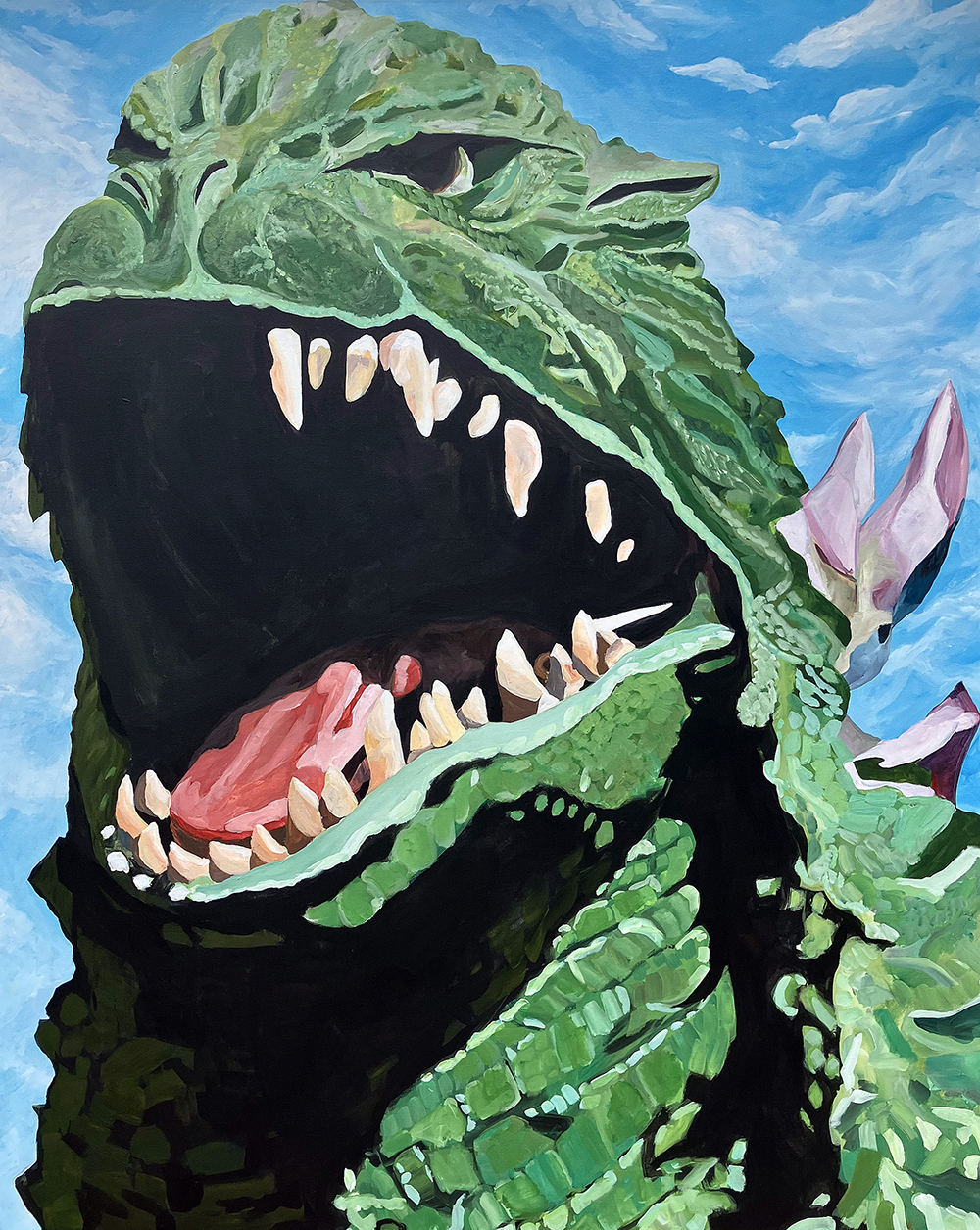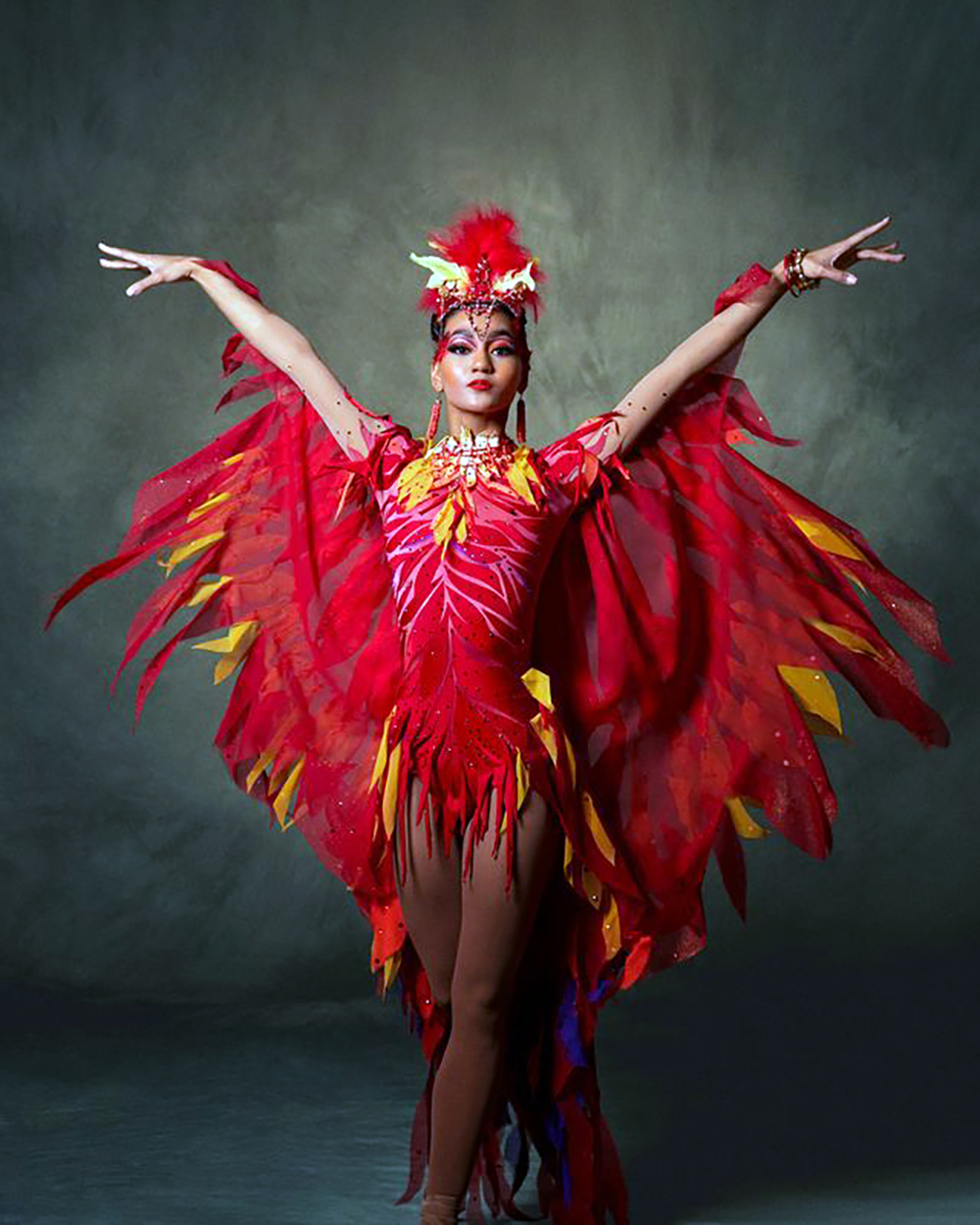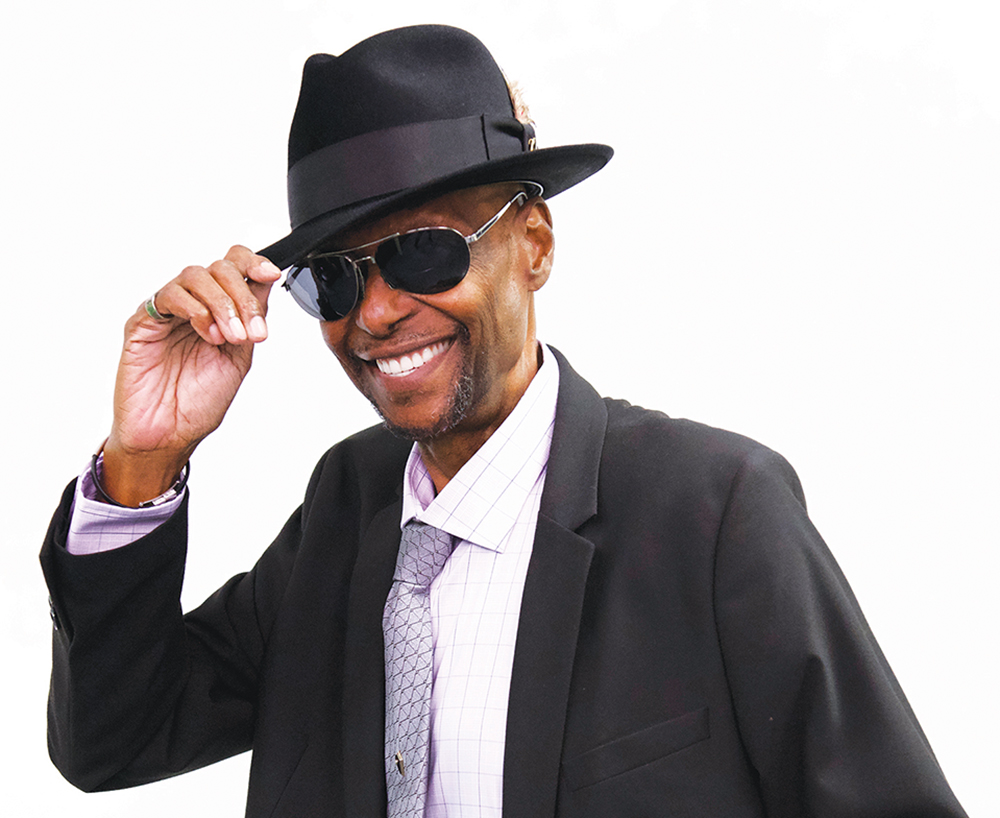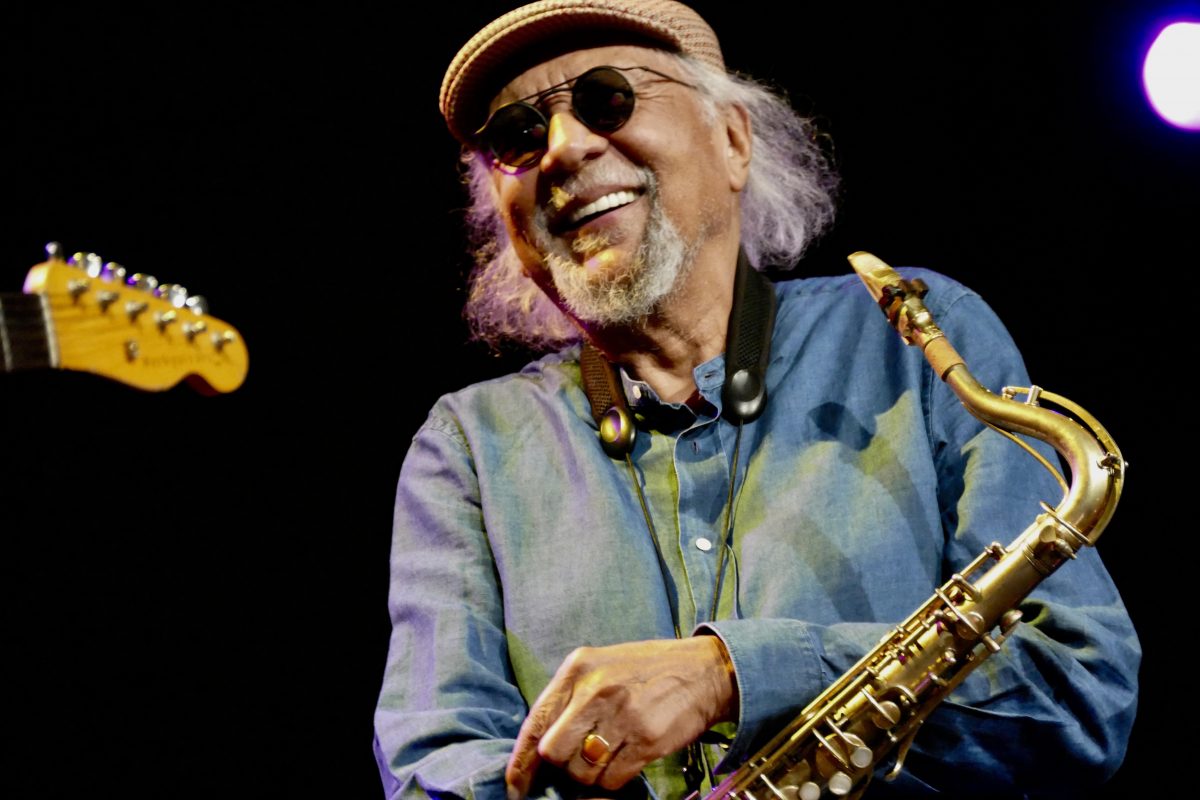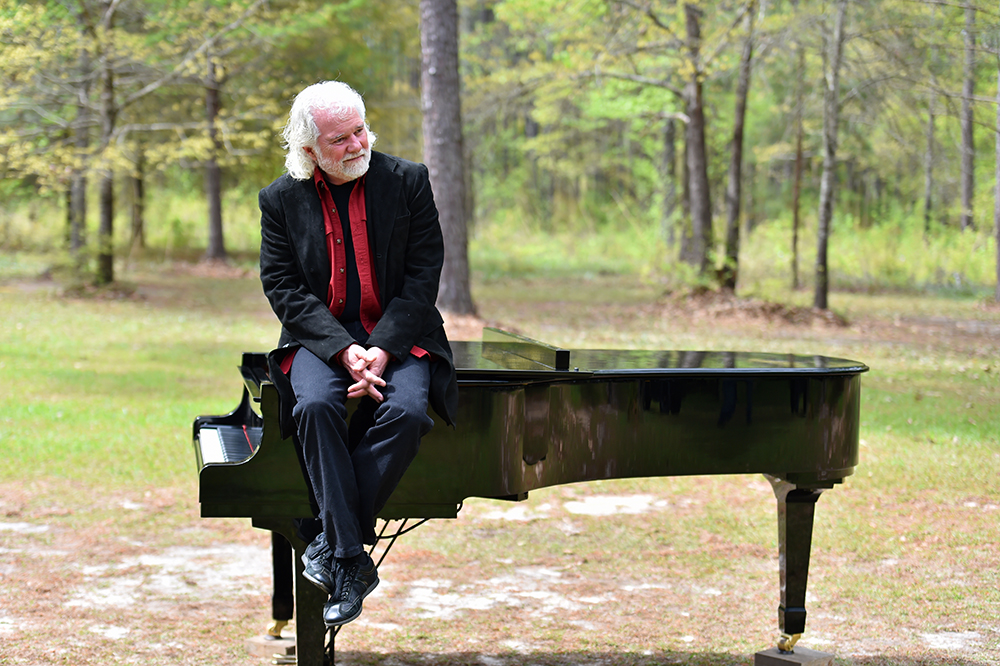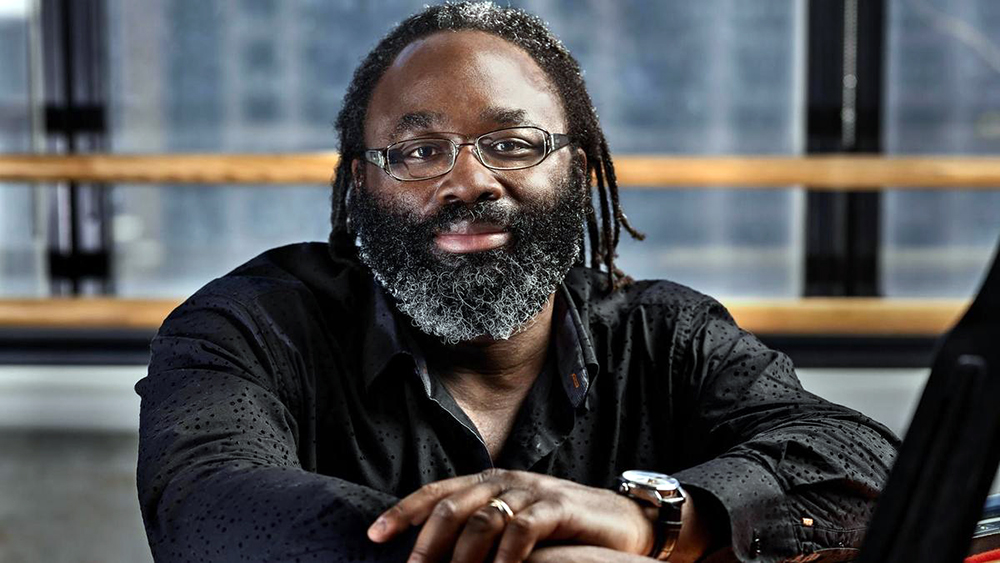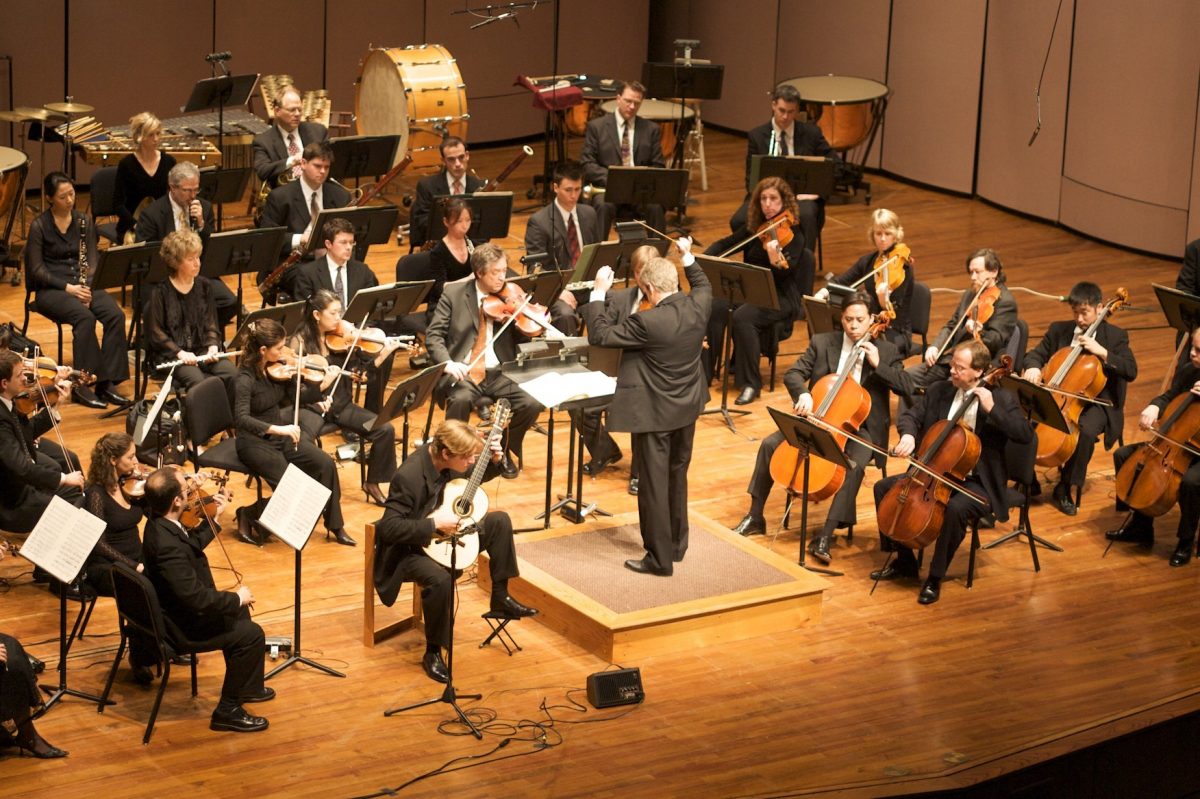Guess what! We went outside! I know, I know, it’s crazy to think that the shut-in Flyer writers went outside and felt the sun shine on our beautiful faces — and my, oh my, are we a beautiful bunch. It’s why we’re in print journalism — see, it’s not just because we have great assignments like “write about a summer outdoor experience,” which we did have and we did do and that’s why we went outside. And, oh yeah, we’re still outside, and we will be, even after the streetlights come on. We’ve found that there are so many things to do out here —especially during the summer! Keep reading to see what we have on our agenda.

Take a Hike
Put down the phone. Go outside. Touch grass. Produce some Vitamin C. Go for a long walk in the woods. “Forest bathing,” as the Japanese call it, will lower your stress levels. Plus, it can be 10 degrees F cooler under the tree canopy, compared to life inside the urban concrete heat island. Hiking is a formula for a convenient psychic reset.
One great thing about the Memphis metro is our easy access to interesting natural spaces. There are a number of quality hiking trails in Shelby County’s environs. There’s Big River Crossing, beginning in Martyrs Park and ending across the river in Arkansas farmland. True, there’s not a lot of trees on the railroad bridge, but the Mississippi River is as big and natural as it gets.
In the East, the Tour de Wolf Trailhead in Shelby Farms is a 5.9-mile loop that takes you through a variety of landscapes. On a sunny, late-spring day, it is usually buzzing with activity — both human and insect. If you’re going to go for a hike around here, good insect repellent is just as important as a solid pair of boots, and it’s just as important to avoid ticks as it is to keep the mosquitos away. Look for a repellent containing Deet, or a lotion with picaridin, to keep both at bay.
If you really want to get away from it all, try the Woodland Trail in Meeman-Shelby Forest State Park. The trail winds through some of the densest forests on the bluffs above the Mississippi. Expect some climbing — this trail covers more vertical distance than most tracks in the Delta, as it dips down into creek beds and washes heading for the river. Some days, you can walk for an hour without seeing another human being, and forget about the stresses of the city just a few miles away. — Chris McCoy

The Shelby Farms Outback
Sometimes your dogs need to get back to their essential dogginess — sans leashes, fences, streets, cars, and other human encumbrances. They need to be able to run through vast green fields and over rolling hills, splash through puddles, wade in a lake, and writhe madly in the grass. Such canine joy is truly a blessing to see. Fortunately for us — and our dogs — there is the Shelby Farms Outback Off-Leash Dog Park.
The Outback was named one of the Top 10 dog parks in the country in USA Today’s “10 Best Readers’ Poll.” To be more precise, it was ranked number four. Here’s what they had to say: “The Outback offers over 100 acres of open space for your pup. Along with miles of hiking and biking trails, there are a number of lakes if your dog fancies a dip. The idyllic park offers plenty of shade and seating, but only a portion of the dog park is fenced, so you’ll want to keep an eye on your dog.”
To that latter point, there are a few things to know: Your dogs should be responsive to your verbal commands. (I use a sonic whistle.) If your dogs don’t come when you call, they’re not ready for an off-leash park. Oh, and take a doggy bag to pick up any solid pet waste.
Access to the Outback is via Gates 11, 12, and 13, on Trinity Road and Raleigh Lagrange Road on the northeastern side of the park. Give it a try. Your dogs will thank you. In fact, my hounds begin excitedly whining as soon we pull onto Sam Cooper Boulevard, leaving Midtown. They know where we’re headed and they highly approve.
— Bruce VanWyngarden
Whet Thursdays
I’ve been described as so cheap I squeak — thanks, Mom — so when there’s an opportunity for a free art experience, I can’t resist. For the summer, the Metal Museum brings its Whet Thursday, with live entertainment, hands-on activities, and metalsmithing demonstrations on the museum’s grounds on the last Thursday of each month — for free. And to catch a break from the heat, the museum offers free admission to its exhibits for the occasion. (Thank goodness!)
Every Whet Thursday has a different theme, entertainment, hands-on activity, and food truck, so you’ll never repeat an experience — and there’s always that gorgeous view of the sunset over the Mississippi River. May 29th kicks off this year’s Whet Thursdays with Overton Park on the Bluff, where guests will be able to meet with Overton Park Partners, make wire rings and pressed flower suncatchers, and listen to Marcella Simien from 5 to 8 p.m.
Other Whet Thursdays include Ballroom on the Bluff (June 26th), which will feature ballroom dancing lessons from Cat’s Ballroom; Karaoke on the Bluff (July 31st), where guests can compete for prizes for the best karaoke performances; Beats on the Bluff (August 28th), complete with a DJ battle; and 901 on the Bluff (September 25th), which will have performances by Corey Lou & Da Village honoring Memphis’ musical roots.
For more information, visit metalmuseum.org. — Abigail Morici

Retro Games, Plus
You know the old saw that the problem with golf is that it’s a good way to spoil a walk — meaning that the built-in fits and starts and prolonged delays of the game militate against its potential cardiovascular benefits.
The game has certain off-setting benefits, of course —some of them social, in the sense that the game is normally engaged in not by individuals playing solo but in packs, with a simultaneous focus on competition and group harmony.
The mechanics of the game, too, range all the way from the sheer power normally required off the driving tee to the controlled finesse of the putt.
Purists may sniff at the idea, but many of the delights of the game — minus the walk, which in the relentless heat and humidity of the typical Memphis summer become a real challenge — can be had from the amusement-park atmosphere of a place like the sprawling Putt-Putt Golf & Games complex on Macon Road.
It’s retro, plus.
There’s the driving range, where, on a good day, you can find a lineup of serious strivers, all whaling away buckets of balls, enjoying the sense of power that comes from belting a good one and meanwhile honing their swing.
Nearby, on the other side of an arcade building, with its generous supply of bells and whistles and electronic games, are three miniature golf courses, ranging in difficulty from easy to hard. Presided over by obstacles in the form of elephants and giraffes and suchlike, players of any age can get a sense of what it’s like to wield a putter.
And there’s more at the complex — batting ranges for both softball and hardball. Bumper cars, bumper boats, and what is advertised as Memphis’ largest game of … laser tag. (What’s that, you say? As with jazz, if you have to ask …)
And no, or very limited, walking. Whew. — Jackson Baker

Memphis River Parks
Take me to the river. That’s where I want to be this summer, what with the lineup of events the Memphis River Parks Partnership (MRPP) has planned. For one thing, I can get fit with weekly free Hustle & Flow fitness classes, from step to HIIT to Pilates to salsa dancing while taking in a gorgeous view at the beautiful Tom Lee Park. The kids that I don’t have (but maybe you do) can also get moving at their own Hustle & Flow classes, led by Kidonetics instructors. They’ll be exploring sports in a noncompetitive environment at River Garden Park. Sounds like a better version of P.E. (i.e., no mile run).
Speaking of kids, monthly on Saturdays, they can join the University of Memphis’ CAESAR for SciPlay to release their inner scientist at Tom Lee Park. On June 21st, that means a lesson on streams to celebrate National Rivers Month, and on July 12th, that means a fun water conservation game to celebrate Smart Irrigation Month.
And kids aren’t the only ones who get to be scientists, thanks to MRPP — and the Memphis Astronomical Society (MAS). Once a month, the whole family has a chance to be an astronomer and take in the magic of the night sky on top of Beale Street Landing, in a celestial exploration led by the folks of MAS. The next Stargazing event is May 31st, weather permitting.
That’s not all: This summer also means the return of Tom Lee Park’s monthly Sunset Skate, this year with themed skate nights. Sunset Skate kicks off on May 29th at 6 to 9 p.m. with a SuperMANE theme, where skaters are asked to dress to save the day. (There will be bounce houses for a chance to fly!)
For each Sunset Skate, Cordova Skating Center provides free 30-minute skate rentals on a first come, first served basis, while Step and Skate will offer skate dance lessons from 6 to 7 p.m. Plus, the Voice of MCSC will be spinning high-energy DJ sets.
Other themed nights to look forward to include Summer Bash (June 26th), Back 2 School (July 31st), and Yeah GLOW (August 28th). For information on these events and more, check out MRPP’s Facebook page. — AM
Overton Park Shell: Free Music Just Got Greener
Nothing says summer like breaking out the camping chairs and picnic blankets and heading over to the Overton Park Shell for some music under the stars. Memphians are lucky to have a nearly 90-year-old bandshell to host such wonders, and even luckier to have Orion Financial’s Free Concert Series there. Moreover, local musicians benefit from the series’ commitment to fostering Memphis talent.
Notable locals have already helped kick the whole thing off, from the Arc of Quasar’s psychedelic sounds to the many diverse groups featured in Dreamfest, now in its 14th year and dubbed the “Healing Edition” this time around. The smorgasbord of sounds will continue through June, spanning genres like classic country, New Orleans street music, indie rock, new-grass, hip-hop, pop, R&B, and soul. And some notable nationwide artists will be the New Breed Brass Band featuring Trombone Shorty on May 31st, the BoDeans on June 14th, Alejandro Escovedo on June 20th, and, wrapping the summer season up on June 28th, the Stax Music Academy.
Best of all, the experience will be greener than ever this year. As the Overton Park Shell’s Shelby Smith explains, “The Overton Park Shell is now the first Project Green Fork [PGF]-certified venue in Memphis. We will work closely with them to ensure sustainability efforts are robust during concert season as it pertains to minimizing food waste, recycling protocols, the use of biodegradable/compostable materials, and more. All food truck vendors plus our venue itself are required to meet a number of criteria that fulfill PGF’s ‘Green Steps.’”
— Alex Greene
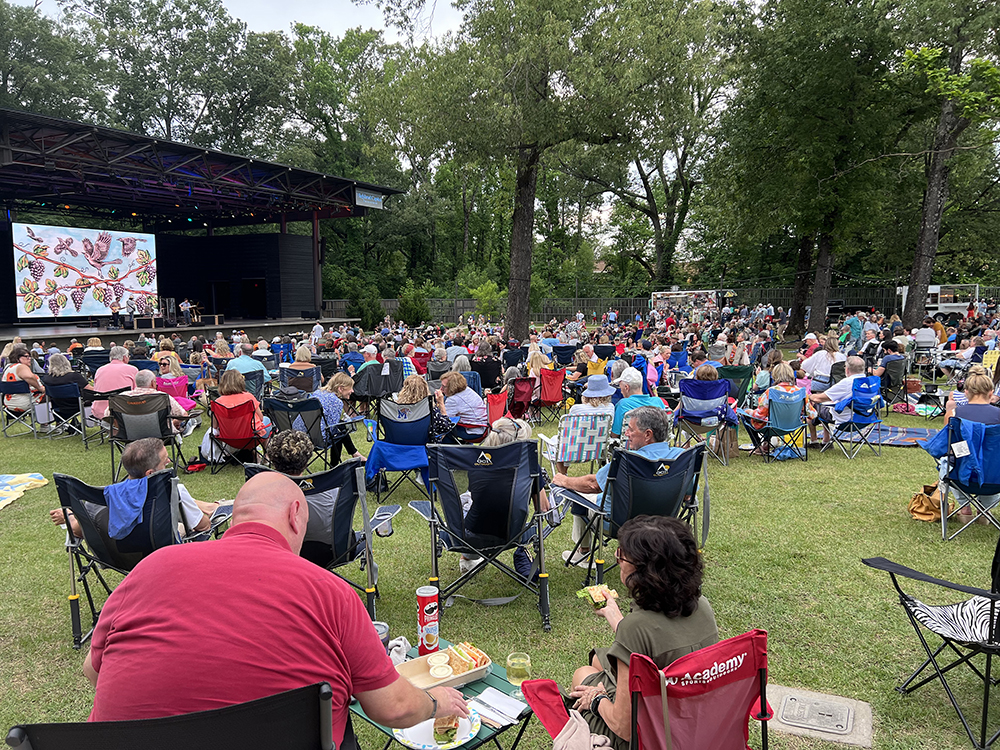
The Grove at GPAC
The Grove at Germantown Performing Arts Center (GPAC) is a gem. Or, as Germantown resident Jill Crocker said to me when I was there the other night, “This is the best thing that ever happened to Germantown.”
And Germantown Mayor Mike Palazzolo told me, “Welcome to our little slice of Midtown.”
This is the outdoor area with a stage, trees, grass, and the setting for a pleasant but not raucously crowded concert experience. I do like raucously crowded events, too, but I wouldn’t have traded this spot the other night.
I was at The Grove to see the Tennessee Screamers, which includes my nephew, Frank McLallen. It was a beautiful night. You can bring in food and drink, chairs, and blankets. We got one of the tables down front. I brought a complete blackened chicken dinner with beans, potato salad, and sweet tea, of course.
They also offered food trucks. So, for dessert, I sprung for three strawberries and cream yogurts for my table from the TCBY truck.
I asked GPAC marketing coordinator Ellen Lemm about The Grove. “We seat approximately 900 guests in The Grove per show offering table tickets — $17 including fees, up to six seats per table, limited availability — as well as general admission tickets — $9 including fees. Tickets for children under 18 are free, but they do need a ticket for entry.
“We offer a full-service bar on the First Horizon Plaza with a menu curated by our food and beverage mixologist Brad Pitts.”
They primarily host public events at The Grove from May through October. “Our spring concerts in The Grove series will typically run every Thursday from May until June, while our fall series will begin late September and go until the end of October.”
Happy Friday is another feature at The Grove, Lemm says. It’s “a free event we host in The Grove every Friday from mid-May until the end of August where we open up the bar, bring in food trucks, and host a variety of local musicians.”
And, she says, “We started a new series last October called Appetite for the Arts, which is also free to the public, where we host food trucks at lunchtime, invite local artists to display and sell their creations, and show arts-related films on the video wall on the Highland Capital stage.
“All in all, I would guesstimate that we host around 50 events outside on the lawn during Grove season.” — Michael Donahue

The Secret Beach
Okay, okay, the Secret Beach hasn’t been secret for a long time now.
There’s even a whole website to tell you how to get there.
A trip to the Secret Beach is a super-fun Memphis summer adventure, mainly because it really does feel like an adventure.
All the info you’re gonna need to get there is at wolfriverbeach.com. But once you park your car, the adventure begins. There’s no bright neon sign pointing the way. So, at a certain point you gotta just go with it and head into the woods. Mysterious markers on trees point to … somewhere. But is it the right way? See? Adventure time.
After a few wrongs turns (and, man, was my kids’ beach bag getting heavy), we found it. Down a steep bank (with no handrail or anything!), the large, sandy beach spread out before us like an oasis at a bend of the Wolf River.
The kids immediately hit the water, wading in at first and then finding deeper pools once they got used to the gentle flow of the river. Oh, and there was a tire swing. Super. Summer. Fun. Time.
Okay, fun is over. It’s grown-up time. Should you swim in this water? A water quality test from the state this year found chlordane, PCBs, mercury, and more in the water and advised against eating fish caught there. However, I experienced no ill effects from swimming there. Also, Memphians have been dipping there for years without warnings from any government agency. Still, though, swim at your own risk. — Toby Sells



